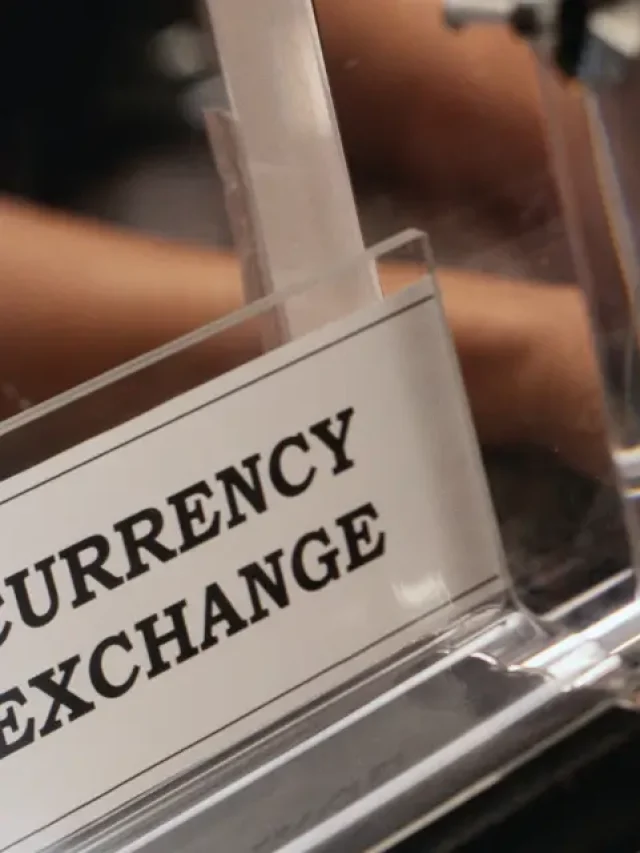Opting to choose Indian banks over foreign banks for education loans to study abroad can have its advantages. Indian banks often offer education loans with the familiarity of the Indian diaspora going abroad. Also, they have a better understanding of the financial requirements. Additionally, they may provide tailored loan repayment options and local support, addressing concerns specific to Indian students. This familiarity, combined with potential ease in communication and documentation, can make Indian banks a practical choice for students seeking financial support to pursue their overseas education aspirations.
Keep reading the blog to explore other reasons to choose Indian student loans for abroad studies.
Also Read: Education Loan Interest for Different Banks for Education Abroad
Table of contents
Loans to Study in the USA
Indian bank education loans are a convenient choice for students aspiring to study in the USA as they have lower interest rates and longer moratoriums and repayment periods. Additionally, tax benefits offered by the Indian government are added advantages.
Types of Loans
In India, study in the USA students can avail of education loans from public as well as private banks. They can apply for study abroad loans from the Indian government from lenders like the State Bank of India, Union Bank of India, Bank of Baroda, etc. In addition, they can also apply for this financial assistance from private banks like Axis Bank, IDFC First Bank, ICICI Bank, etc.
On the other hand, the US does not provide Federal Education Loan to international students. These loans are only available to US Citizens. However, students can apply for private bank loans, which are available at high-interest rates.
Also Read: Education Loan in USA for International Students
Interest Rates
Furthermore, differences in education loan interest rates between Indian Banks and USA Banks are a great motivation to prefer the former over the latter. US banks offer variable interest rates ranging from 3.75% to 8.75% Annual Percentage Rate (APR) for private student loans, while federal loans have fixed rates between 7.24% and 12.29% APR. However, the issue of INR to USD conversion rates can complicate loans from US banks. Opting for Indian lenders, like nationalised banks such as BoB, SBI, PNB, etc is often preferred due to lower interest rates and no exchange rate concerns. For example, SBI education loan rates vary from 11.75% to 13.50% per annum.
Comparatively, a 10% interest rate from a US lender is similar to a 15% rate from an Indian lender. Repaying a USD loan while earning in a depreciating INR currency could lead to repayment challenges.
Co-Signer
Additionally, the requirement for a permanent resident in the USA with a good credit score as a co-signer while applying for student loans is a limitation in itself. Furthermore, US banks mandate that the co-signer must have resided in the USA for at least 2 years. Therefore, it becomes difficult for an overseas student to find a co-signer in an unfamiliar country.
Whereas, Indian public and private banks accept any co-signer with Indian citizenship. In this situation, you can present any of your family members as a co-applicant. Owing to this reason, it is viable to choose Indian banks over foreign banks for education loans to study in the USA.
Loan Repayment Option
Thereafter, Indian banks usually have a loan repayment period of nearly 7 to 10 years. Besides, these lenders also offer a moratorium period of course duration and 6 months to 1 year after degree completion. Moreover, study abroad students availing of government education loans in India need not pay the interest amount during the moratorium period.
Unlike public and private banks in India, US banks do not extend the moratorium period after course completion. Overseas students need to start repayments immediately after course completion. Additionally, beneficiaries of certain US bank student loans need to deposit the interest amount during the course tenure.
Also Read: Pros and Cons of Paying Off Student Loans Early
Tax Benefits
On top of that, study abroad loan beneficiaries in India also get tax benefits under section 80E of the Income Tax Act, 1961. Under this act, the government of India exempts tax on the interest amount of your study loans. Besides, the Union Government of India also pays interest amounts during the moratorium period for students from minority communities under the “Padho Pardesh Scheme”. This benefit is available to students availing of education loans from nationalised banks of India.
While in contrast, overseas students availing of private bank loans in the US do not get any tax emotions even when they return back to India after course completion. On account of this, you will have to pay a minimum of 10% interest rate on your student loans.
Also Read: TCS International Rates: How do they make Abroad Education Loans more rewarding?
Processing Fee
Another reason to opt for Indian banks over foreign banks for education loans to study in the USA is the low processing fees in India. Banks in India charge a processing fee between 0 to a maximum of INR 10 lakh. But, US banks charge 2.5% of the loan amount on education loans of up to INR 40 lakhs. This usually amounts to nearly INR 1 lakh, which is exceptionally high.
Loans to study in the UK
Unlike US Banks, UK government banks do not offer education loans to Indian citizens. Thus, it is advisable to avail of study in UK education loans from Indian banks before starting your academic studies. In addition, if you plan to study in the UK you must also remember that you can opt for part-time jobs to finance your education.
Furthermore, it is essential that you get your education loan sanctioned from an Indian bank as you are required to prove a certain amount in your bank account for the initial 9 months. You must have £1,015 in your overseas student bank account for each month of study, up to a maximum of nine months, to qualify for your visa.
Additionally, if you are studying in London, this amount surges to £1,265. Essentially, you’ll need to have saved between £9,135 and £11,385 in your bank account (varying based on your university’s location) before you can secure your student visa.
Also Read: Top Bank Accounts in the UK for International Students
Loans to study in Australia
Indian banks offer secured and unsecured loans to study in Australia. Nationalised banks sanction unsecured education loans of up to INR 7.5 lakh and secured loans of up to INR 1.5 cr to study abroad students.
- To avail of these loans, students can apply via the Vidya Lakshmi Portal or FlyFinance.
- Whether applying through Vidya Lakshmi or Fly Finance, students must produce the documents required for education loans.
- After successful completion of the loan application process, banks disburse the loan amount to the university or student account directly. Indian students can use these portals to compare loans from different banks and calculate EMI for education loans, owing to which they get numerous options to choose from.
Whereas, in Australia international students have access to only University loans and Higher Education Loan Programme (HELP). On account of this, it is viable to choose Indian banks over foreign banks for education loans to study in Australia.
Unfortunately, HELP is only for overseas students with a humanitarian visa or Australian citizenship. However, Indian students can apply for University Loans. But, these loans are available for only select universities in Australia. Here are some examples of University Loans:
| Universities | Loan Amount |
| Monash University | AUD 750 to AUD 3,000 |
| University of Melbourne | Up to AUD 5,000 (with an Australian co-signer) and Up to AUD 3,000 (without a co-signer) |
| University of Sydney | Up to AUD 2,000 |
Also Read: Education Loan for Australia
Loan Repayment
Nationalised banks in India have an education loan repayment tenure of around 7 to 15 years. In addition, these banks also have a provision for a moratorium period, during which students need not pay any interest or principal amount. This period includes course duration as well as a relaxation of 6 months to 1 year after course completion.
In comparison to the Indian government education loans, University Loans in Australia have a shorter repayment period. For instance, University of Sydney students have to repay their loans within 2 years after their graduation. Likewise, Monash University students have to repay their loans within 6 to 12 months after course completion.
Also Read: Australian Student Loans for Overseas Studies
Exception Case: German Banks > Indian Banks
Unlike USA, UK, and Australia, Germany offers easy and low-interest student loans to international students. This European nation offers student loans under the Bildungskredit scheme of the German government. This financial assistance is a combination of private finance and state funding.
Here are the benefits of this German education loan for overseas students:
- German banks sanction loans of up to EUR 7,200 for each academic year
- Loan repayment starts after 4 years of course completion
- Further, students are not allowed to pay more than EUR 120 per month
- In comparison to Indian Banks, German Banks offer student loans at lower interest rates and in some cases zero interest rates.
Also Read: Deutsche Bank Loans
FAQs
Ans. One of the key reasons is the tax benefit under section 80E of the IT Act. According to this act, an Indian student who avails of student loans from Indian banks is not required to pay tax on the loan interest. Additionally, if you are an Indian citizen, any family member of yours can act as a co-signer. Whereas, it is difficult to find a co-applicant in a foreign country.
Ans. Yes, several private banks in the USA grant student loans to international students. However, the interest rate is extremely high and the moratorium period is very low. In addition, beneficiaries will have to start paying loan interest during the course tenure, which is not the case with Indian government education loans to study abroad.
Ans. Yes, Germany offers education loans at minimal interest rates to both domestic and overseas students. International students get student loans to study in Germany under the Bildungskredit programme of the country.
Stay in touch with Fly Finance to avail yourself of study abroad loans and international money transfer services. To get end-to-end assistance, connect with our experts at 1800 572 126.





























